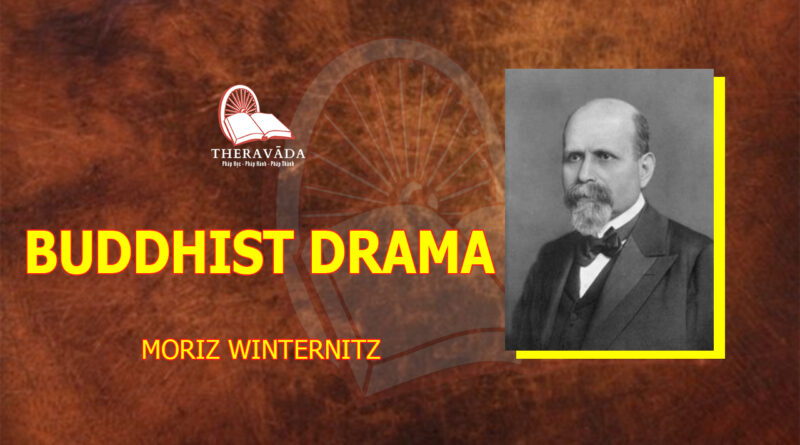Buddhist Drama
Moriz Winternitz
According to the Majjhimasīla section, a certain ancient tract in the Buddhist canon, which is preserved in the Brahmajālasutta and in the Tevijjasutta of the Dīghanikāya, the Buddhist monks were forbidden to participate in all varieties of public entertainments including dancing, singing, recitation, animal fights and similar shows. Here is also interdicted the pekkha by which generally a dramatic performance is understood. It is doubtful, however, whether pekkha, which is the Sanskrit prekṣa, actually indicated a dramatic performance. In the Vinayapiṭaka also (Suttavibhaṅga to Saṅghādisesa 13, Cullavagga 1, 13, 1-2) the enjoyment of dances, sport and music is forbidden to the monks, although there is no reference to theatrical performances. Accordingly it is at best questionable, whether at the period when the Buddhist canon was compiled there already existed a theatre and the exhibition of dramatic pieces was carried out.
The Nāṭas who are frequently mentioned in our Jātaka Book are wandering minstrels and dancers and not dramatic performers. Jātaka No. 212, 291, 432; Fick, Social Division in North-Eastern India in Buddha’s time p. 188. In the Jātakas as well as in the Sagāthavagga of the Saṁyuttanikāya, in the Suttanipāta, and in the Thera- and Therigāthās there is not an insignificant number of ballads in the form of dialogues. They consist partly of gāthās and partly of a combination of gāthās and brief prose passages. The best known examples are the Padhānasutta and the Pabajjasutta in the Suttanipāta (Windisch, Māra [221] Théatre Indien p. 319). In Burma of to-day, as a solemn preliminary to the initiation of a Buddhist novice, the Vessantarajātaka is performed as a theatrical piece and the initiation itself is a formal drama.
Buddhist-Drama

